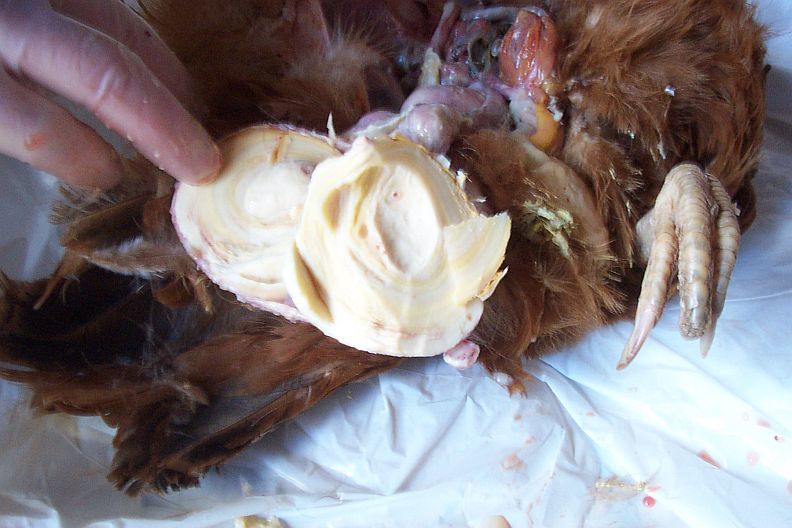Egg yolks are magnets for infection. When, for whatever reason, they get stuck inside the chicken, they will eventually look like your what is seen in your photos. In my experience, what you have photographed can also happen inside the reproductive tract (not in the body cavity, which is true "internal laying.") When one egg becomes impacted (perhaps it was broken, or perhaps there was a glitch with that "conveyor belt") then the other eggs back up behind it and you get those massive, hard, infected eggs. I've done some research on this, and discussed it with vets. Sometimes the initial impaction happens because of a salmonella infection, and sometimes it occurs because of a physical problem with the egg laying system. In either event there is no cure. Often, when people think that their hens are "egg bound" it is this situation that is actually going on inside of their hens.
Hens can live and suffer with these kinds of incurable ailments for quite awhile before succumbing. I've written about end of life decisions here: http://www.hencam.com/henblog/2011/09/end-of-life-decisions/
Hens can live and suffer with these kinds of incurable ailments for quite awhile before succumbing. I've written about end of life decisions here: http://www.hencam.com/henblog/2011/09/end-of-life-decisions/







